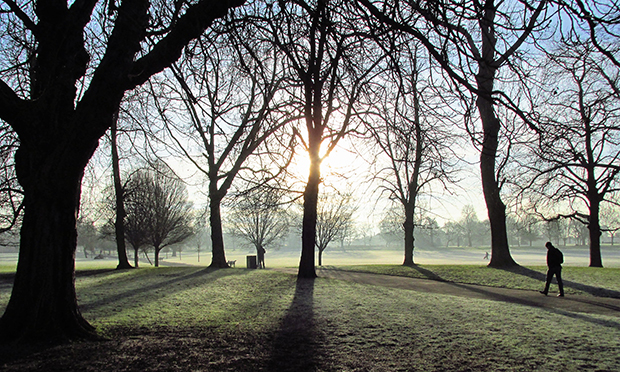Tree felling in Hackney tripled in a single year, new figures show

Falling leaves: a number of trees were cut down in Clissold Park this year. Photograph: David Holt
The number of trees chopped down by council chainsaw teams rose by over 200 per cent last year.
Figures obtained by Engineering & Technology magazine show 189 trees were felled in the borough in 2016, up from 58 in the previous year and just 32 in 2014.
A Hackney Council spokesman revealed 69 wooden giants have so far been axed in 2017, but said “all street trees are re-planted” and that 120 extra trees have been introduced in the borough’s parks this year.
Hackney does not come close to some other London councils in the tree-felling stakes – Redbridge lopped down a startling 5,790 trees between 2011 and 2016, with Barnet second on 4,076 – but one conservation group said the spike in the borough tallies with a growing increase across the capital.
The Woodland Trust’s Joseph Coles said he hoped Hackney only resorts to felling when “absolutely necessary”, warning: “If mature trees are replaced with young specimens, it can significantly reduce the effectiveness of a canopy lining a street, with many other associated impacts.
“Where there is no other option than to remove a mature tree for safety reasons, we would like to see replacement on at least a two-for-one basis, with a clear plan for ensuring they are successfully established.”
In April, Clissold Park users raised concerns after spotting council contractors removing several trees.
One resident told the Citizen that walking through the park during the felling was “debilitating and depressing”, adding: “It is a tough time for the council, with many more urgent needs that have to be met – rough sleeping, air pollution, school funding.
“I know there is a health and safety aspect, that unsafe trees need to be dealt with due to storm damage or old age for example, but why the sudden flurry of activity?”
Coles added: “We know the vast majority of residents appreciate street trees for the many benefits they bring such as shading, reducing the effects of air pollution and most importantly making streets more pleasant to live on.
“We want to work with local authorities across the country to ensure as many mature trees remain on our streets as possible. This is an essential commitment to the future of our urban environments.”
Commenting on the spike in downed trees last year, the Town Hall spokesman said it was the result of a borough-wide survey “in addition to the regular cycle of inspections”.
He said the 189 trees destroyed last year represent “less than 1 per cent of the 20,000 trees” in the council’s bailiwick, adding: “We always consider options to retain the tree, such as pruning, but in some cases felling a tree is the only way of making sure residents are protected from the potential risk of a tree falling down.
“Common reasons for trees needing to be felled include: trees reaching the end of their natural life, fungal decay and other structural defects, deliberate vandalism, poisoning or arson. Milder weather, less rainfall, and new tree diseases also appear to be having a negative effect on certain tree species.
“We are already considering this in our planting programmes by diversifying our tree species to better cope with changing weather patterns and other challenges, thereby protecting Hackney’s trees for current and future generations.”
